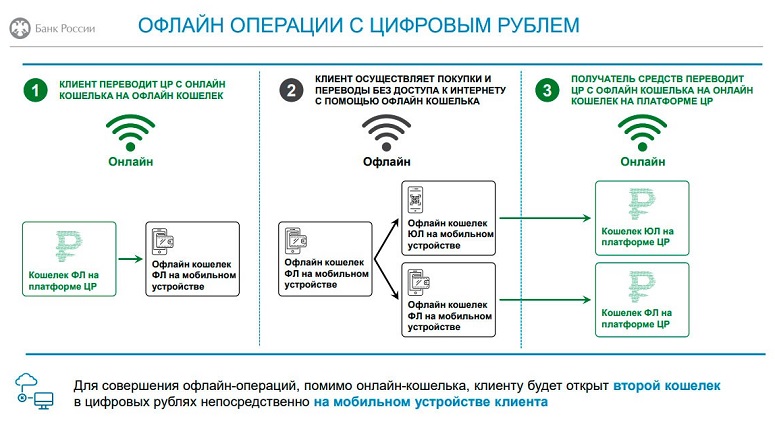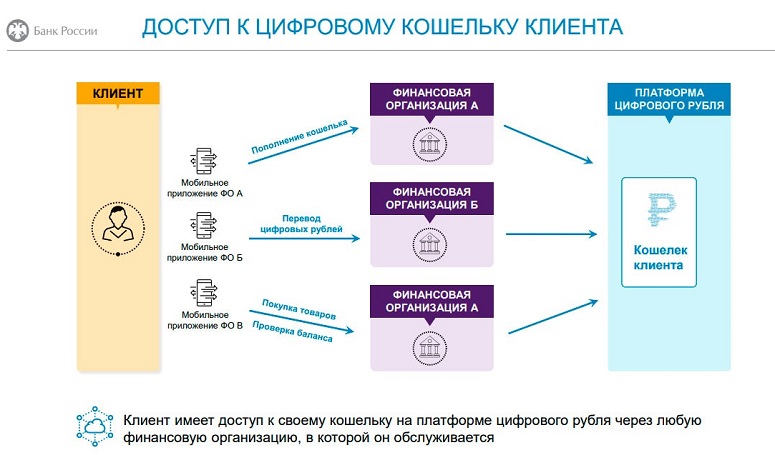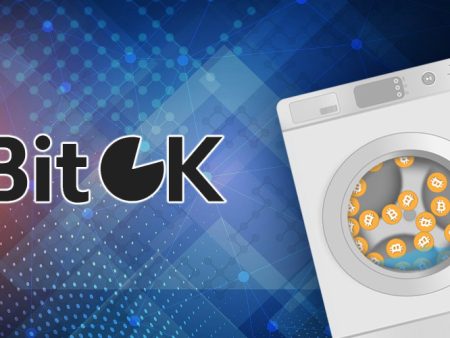
The cryptocurrency market is attracting more and more participants, including businesses and institutional investors. That is why the Bank of Russia has developed its own cryptocurrency which can be controlled. Financial organizations will be responsible for verifying users on the platform. Only authorized clients of banks with digital rubles will be able to enter the system. In the pilot testing, which is currently underway, 12 institutions are participating. The Central Bank is confident that their number will grow.
What is a digital ruble
The Bank of Russia is working on the introduction of a third payment form – CBDC – from 2020. Digital rubles will complement cash and non-cash money. Citizens will be able to choose which of the three ways to pay for purchases. The digital ruble has the following features:
- It works on the CBDC’s own platform, with open-source software involved in its creation.
- Only one wallet can be opened. Exception – one in the investor’s own name and one as a representative of the company.
- Individuals and organizations have access to the platform.
- Responsibility for the funds in the wallets lies with the Central Bank.
- Only residents of the Russian Federation can open accounts.
- Individuals will pay for purchases without commission, companies – with a small fee (0.6-0.9%).
Launch date
The bill on the digital ruble was approved by the State Duma in May 2023. It will come into force already in the summer. In 2023, the Central Bank is testing the work of the platform, partner banks and an initiative group of clients are involved. It is necessary to check the compatibility of the Central Bank’s software and organizations’ mobile applications.
Users carry out various actions – replenish accounts, transfer funds, pay for purchases. After the adoption of the law, it will be possible to perform operations with real money. The security of settlements is controlled by the Central Bank.
The regulator has a great responsibility. One successful hacker attack can cause significant damage. Therefore, the Bank of Russia is in no hurry to launch the platform publicly. It is expected to continue testing it until the end of 2023. Based on the results, a conclusion will be drawn on further stages of implementation.
According to preliminary estimates, the platform may be launched for mass use no earlier than 2025.
5020 $
Bonus til nye brugere!
ByBit giver bekvemme og sikre betingelser for handel med kryptovaluta, tilbyder lave provisioner, højt likviditetsniveau og moderne værktøjer til markedsanalyse. Den understøtter spot- og gearet handel og hjælper begyndere og professionelle handlere med en intuitiv grænseflade og vejledninger.
Optjen en 100 $-bonus
for nye brugere!
Den største kryptobørs, hvor du hurtigt og sikkert kan starte din rejse i kryptovalutaernes verden. Platformen tilbyder hundredvis af populære aktiver, lave provisioner og avancerede værktøjer til handel og investering. Nem registrering, høj transaktionshastighed og pålidelig beskyttelse af midler gør Binance til et godt valg for handlere på alle niveauer!
How to pay for purchases
If a customer pays by card, retail outlets give up to 10% of their profits to banks. The Central Bank said that the commission for payment with digital RUB will not exceed 0.9%.

Experts have already estimated that retailers will be able to save up to 50 billion rubles a year. They will be able to offer discounts to customers when choosing this payment method. The CBDC settlement procedure is as follows:
- Create a wallet on the CBDC platform.
- Transfer funds into it from the partner’s mobile bank.
- Open the store’s website, put goods in the cart and place an order.
- Choose digital rouble as a payment method.
- Scan the QR code.
- Sign the transaction.
Which banks will test the digital rouble
According to the statements of the representatives of the Bank of Russia, 15 financial institutions have already joined the program. 12 of them have software ready for testing. These are the banks that will be working with the digital ruble:
- Alfa Bank
- Promsvyazbank
- VTB
- Gazprombank
- Sberbank and others.
VTB and Promsvyazbank were the first in the Russian Federation to pilot real money transfers between users on the platform. The Central Bank expects more financial institutions to join the program in the future.

Whether the use of digital money will become mandatory
The digital rouble will become the third means of payment in the Russian Federation. Users will choose in what form to receive transfers and how to pay for purchases. The Central Bank expects that there will be demand for CBDC due to its advantages (high speed, transparency, low commissions). However, there will be no compulsion to use it.
Digital pensions in Russia
One of the reasons for the introduction of CBDC is to reduce the cost of budget transactions. Now the government has to pay commissions to banks for transfers of salaries, pensions and allowances. Costs can be significantly reduced if blockchain technology is used. The fee is set by the Bank of Russia, and for some categories of transactions it may not exist.
There will be no compulsion to use digital money, as was the case with the Mir cards.
To work with the new form of payment, you need a modern smartphone and access to the Internet. The regulator recognizes that many citizens can not buy a gadget or do not know how to use it. Therefore, Russians will choose how to receive pensions – on the card, in cash or in a digital wallet. If necessary, funds can be instantly transferred via the bank’s mobile application.
Pros and cons of using digital money
It is expected that the platform will be in demand among citizens who do not trust banks. The Central Bank is responsible for the security of settlements. As long as it functions, funds are not threatened by anything. If the bank through which the user registered the wallet goes bankrupt, it is possible to enter the system through the mobile application of another financial organization.
Among the disadvantages of the new form of RUB can be noted the absence of cashback and interest income on the balance. However, this is compensated for by discounts when paying for purchases and low transaction fees. The table contains other pros and cons of the new money.
| Fordele | Ulemper |
|---|---|
Ofte stillede spørgsmål
🔔 Can I borrow in digital rubles?
No. Users will only receive loans in cash and non-cash. But they can be converted through the app.
📌 Why have banks opposed CBDC?
Financial organizations fear that their services will be rendered redundant when the digital rouble is introduced. Users will be able to contact the CB directly and the functions of banks will be taken over by smart contracts. Therefore, CBDC has not added investment options. It can only be used for settlement.
💳 Do you need verification to register an account?
Only authorized users of financial institutions can open wallets. All data is already in the program, no additional documents need to be provided.
🛒 Where can I buy CBDC?
The new form of monetary units will not be traded on the Moscow and SPB Exchange. Users will be able to top up their wallets with transfers from partner apps.
⚡ What consequences await banks after the mass introduction of CBDC?
Analysts predict that financial organizations will face liquidity outflow. It is expected that with the gradual introduction of the new form of payment, this process can be made smooth.
Er der en fejl i teksten? Fremhæv den med musen, og tryk på Ctrl + Indtast
Forfatter: Saifedean Ammousen ekspert i kryptovaluta-økonomi.














